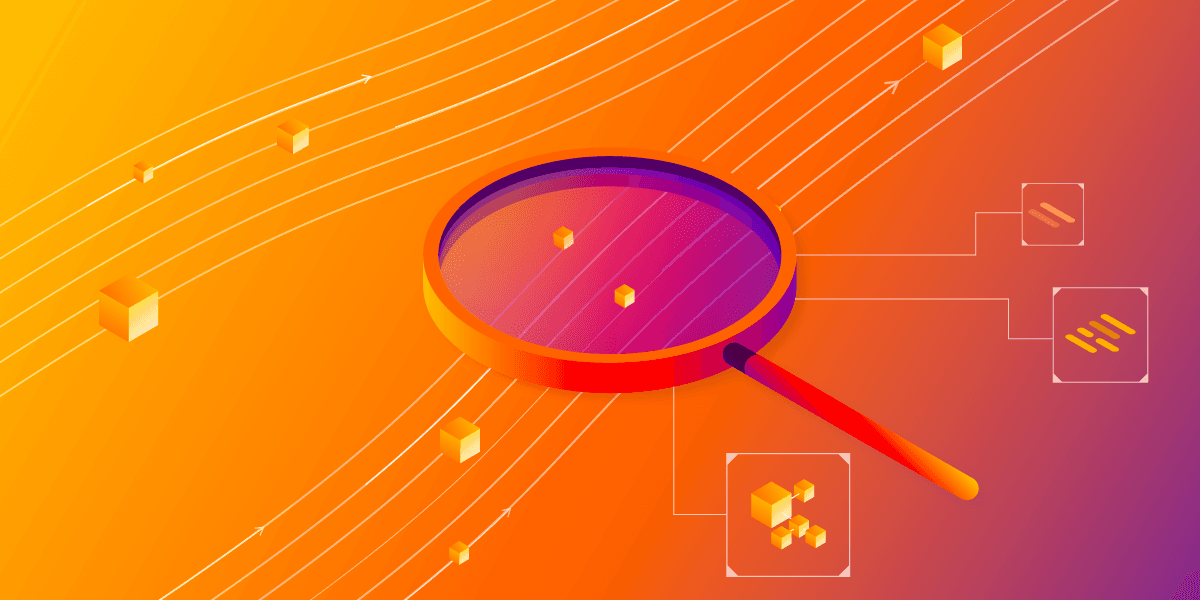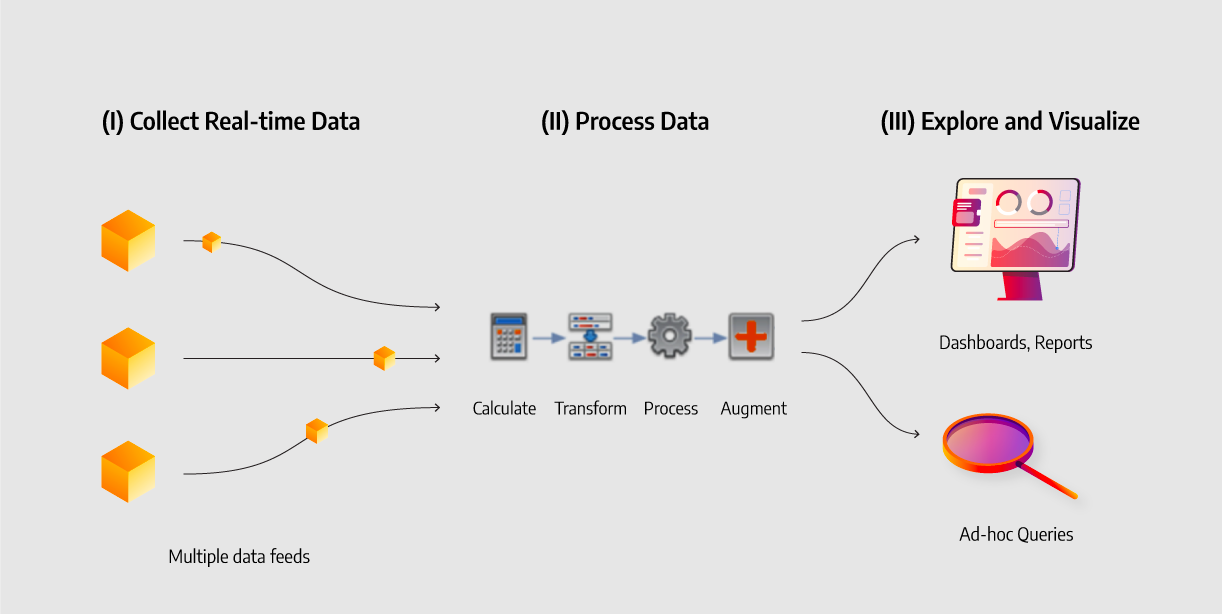
Guide to Real-Time Analytics
Many organizations are struggling to transform the massive amount of data into actionable business insights and make decisions on the spot. This is where real-time analytics come to play. It allows you to get key insights almost instantaneously so you can make decisions timely, just as data continuously pours into your analytics system or dashboard.
But what are the real benefits as well as implications of using it in your company? In this post, we’ll provide an introduction to real-time analytics and showcase a couple of examples.
What is real-time analytics?
Real-time analytics is the process of preparing and measuring data as it arrives in the system. It turns the information into valuable insights instantly. Also, it offers low response times and can deal with large amounts of data with high velocity. As a result, it can answer the queries within seconds, making it possible for data science teams to understand relationships, automate processes, and make predictions immediately.
Types of real-time data
There’s a lot of data businesses analyze in real-time, these are just the most common examples:
- Customer relationship management (CRM) data: Customer’s relevant personal information, number of purchases, general interest
- Enterprise resource management (ERP) data: Transactional data, analytical data, master data
- Third-party SaaS vendors or solution providers data: Account balance, transaction
- Website and application data: Number of users, bounce rate, top traffic source
- Customer support system data: Customer’s ticket type, satisfaction level, personal information
If you want to expand on this subject, you can have a look at our guide for real-time data.

Real-time analytics use cases and examples
From retailers to financial services, all businesses are collecting more data than ever before. By 2030, the number of IoT-connected devices will reach 24.1 billion. So, the companies will have to deal with even more data in the coming years. However, a lot of them are struggling with keeping up the huge amount of information and turning them into actionable business insights.
This is where real-time analytics can help massively. It turns data into insights immediately after it’s collected. It can predict when your system is about to be breached. For example, some graph database providers can help companies utilize real-time analytics to detect and prevent credit card fraud even before the transaction is completed. Graph databases ensure that relationship-oriented queries are conducted in real-time. By representing a series of credit card transactions as a graph, it enables your team to identify and stop fraudulent activities instantly.
Ecommerce businesses are using real-time analytics for personalizing the user experience and boosting the number of sales. They utilize the specific technology to assess the user’s activity over the last 5 minutes. Based on the analysis, the eCommerce websites recommend the items to the buyers that they have been looking for. Retail brands that have adopted personalization increase customer conversion rates by 10-15%. Ritual, a health tech company, generated a huge number of sales from the new product lines by implementing personalized banner ads, targeted bundled offers, and email campaigns.
Companies are using real-time analytics to connect consumer behaviors and preferences to pivot business decisions in real-time. FactGem, a leading data analytics technology company, utilizes Memgraph to provide clients with more comprehensive data availability and analysis in real-time. As a result, the organization can react to their customers’ purchase points even faster. It can create loyalty, encourage repeat business, and boost revenue.
How to Implement real-time analytics
Like many companies, you might be planning to move from historical data analytics to real-time analytics. But how do you kick off the implementation process? Here’s a quick overview of how to get started.
1. Understand what you need
Before implementing real-time analytics into your business, you need to have a clear idea of your company’s needs. What is your goal with real-time reporting? Is it essential for the whole company or just an individual team? How will your team utilize the insights? These are some of the questions you need to ask yourself before getting started with real-time analytics.
2. Pinpoint data sources precisely
Before building the right data infrastructure, you need to pinpoint the data sources precisely. Also, you need to figure out the type of data you need to analyze. There are a variety of types, including streaming data, CRM data, ERP data, or any other application data. You need to take a close look at the needs of your company or teams to map out all the key data sources and types before implementing real-time analytics.
3. Build your data infrastructure
Now, you can start thinking about building the data infrastructure. You will have to create a pipeline for collecting the data. You can store and analyze the information in a Cloud ETL or Cloud Data Warehouse.
ETL stands for Extract, Transform and Load. It refers to the process of collecting the data from diverse sources, transforming it into a common format, and loading it into the warehouse for analysis. The ETL process might sound pretty complex. Fortunately, there are solutions for simplifying and automating everything. As a result, businesses can get access to real-time analytics easily.
Cloud Data Warehouse refers to the database that is delivered in a public cloud. Being a managed service, it is well optimized for data analytics. Also, it is very easy to use. It enables you to store and query large amounts of data in real-time.
4. Choose the best real-time analytics tool
Once you are done with building the infrastructure, you will have to find a real-time analytics tool. It will enable you to search through all that data and get actionable insights instantly. You can utilize the information to make informed business decisions and stay ahead. There are various real-time analytics and streaming analytics tools. However, you need to find the one that works best for your use case. You need to analyze the internal requirements of your team and get the tool that aligns with them effectively.
Is the real-time analytics tool that you are choosing easy to use? Does it have the capability to scale with your team’s changing analytics requirement? Is it highly secure? It would be best if you found the answers to these questions before choosing any tool for real-time analytics.
Using real-time analytics in big data
Big data analytics enables companies to utilize massive data sets efficiently to uncover key information about their processes, customers, market, and more. Applying the technology in real-time means pushing data through analytics software as it arrives. It provides actionable insights faster. As a result, you can make better business decisions in a much shorter time.
Big data analytics is very helpful for businesses that regularly deal with a huge amount of data. To use the data in real-time, it creates batches of data. The batches are sent and mapped on distinct compute engines. Then the results are compiled for analysis. The insights are typically delivered in real-time to the dashboard so that you can analyze all the information quickly and conveniently.
Big data analytics helps businesses deal with diverse and large amounts of data efficiently. Citi Ventures, an innovation arm of Citi, utilized big data and real-time analytics to speed up fraud detection. Also, retailers have been using real-time analytics in big data to accurately predict holiday sales and order the right amount of merchandise.
Bottom line
With this article, we wanted to give you a brief introduction to the world of real-time analytics. Now you see how it can help you to get more value from your data in case you need to make decisions on the spot, in real-time, just as the new data arrives into the system. For some use cases like fraud detection, it is the only game in town.